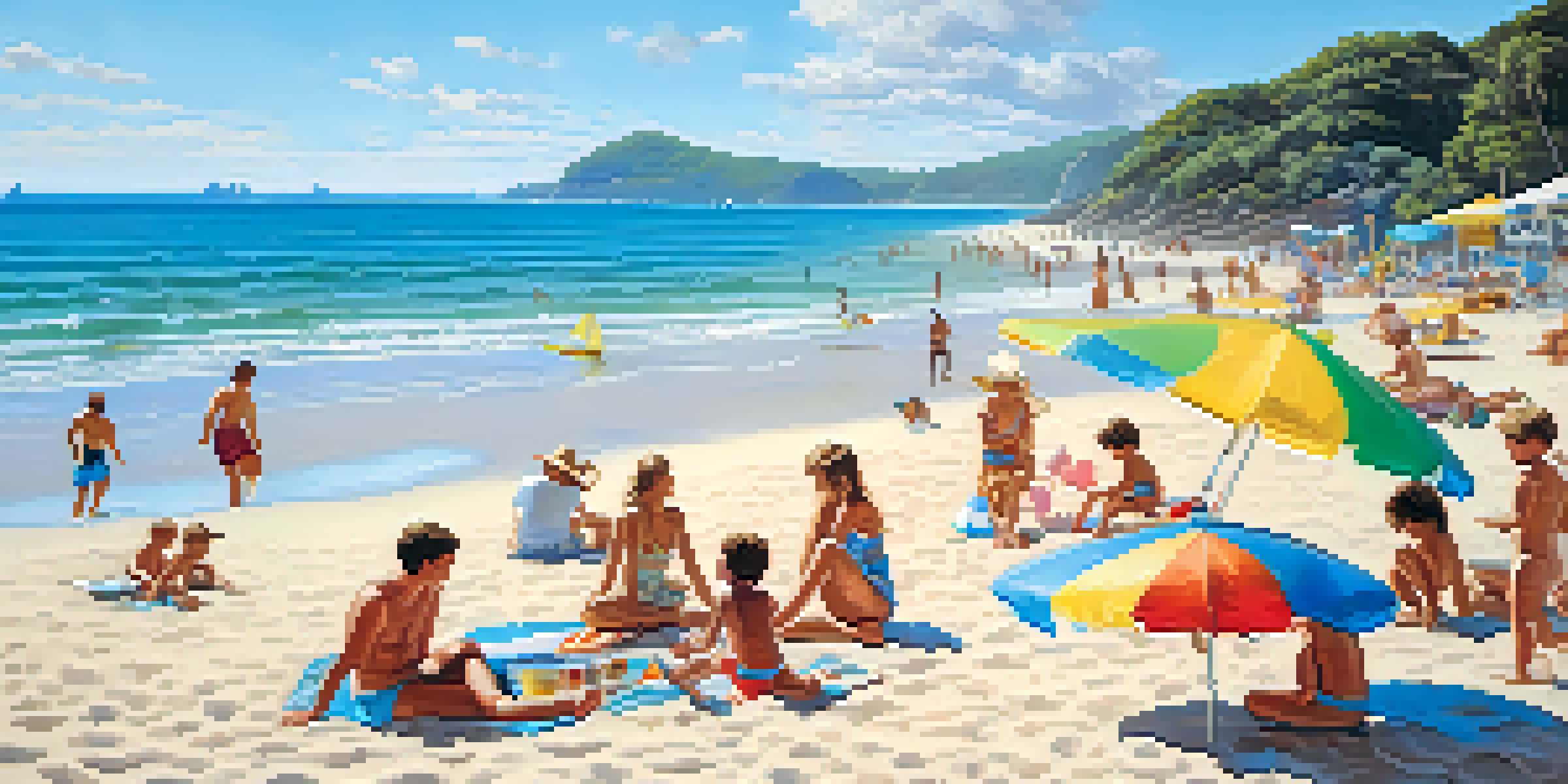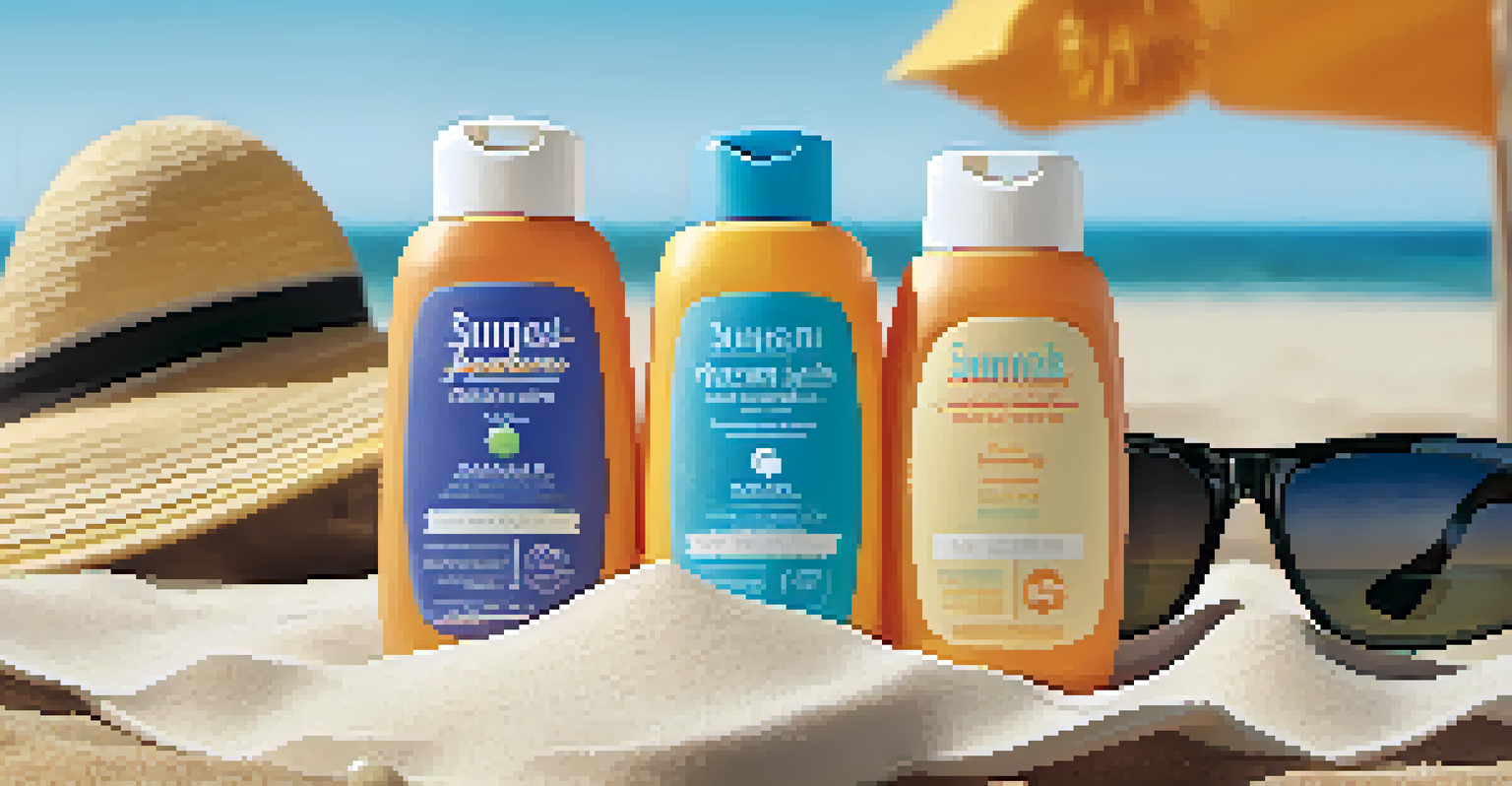Sun Safety Tips for Tourists Enjoying Brazil's Beaches

Understand the UV Index Before Hitting the Beach
Before you soak up the sun, check the UV Index for the day. This index measures the strength of ultraviolet radiation from the sun and can guide you on how much sun protection you need. In Brazil, especially near the equator, the UV rays can be intense, so knowing the index helps you plan your beach day wisely.
Sunlight is the best disinfectant.
A higher UV index means you’ll need to take extra precautions, such as wearing sunscreen and seeking shade. For instance, during midday hours when the sun is at its peak, the UV index can reach extreme levels. Being aware of this helps you avoid unnecessary sunburns and skin damage.
Remember, the UV index can change throughout the day, so make it a habit to check it regularly. Apps and websites provide real-time updates, making it easier for you to stay informed and protected while enjoying Brazil's beautiful beaches.
Choose the Right Sunscreen for Your Skin Type
Not all sunscreens are created equal, so it’s important to choose one that suits your skin type. Look for a broad-spectrum sunscreen with an SPF of at least 30, which blocks about 97% of UVB rays. If you have sensitive skin, consider a mineral sunscreen containing zinc oxide or titanium dioxide, which can be gentler on the skin.

Apply sunscreen generously and remember to cover all exposed areas, including often-missed spots like your ears and the back of your knees. It’s recommended to apply it about 15 minutes before heading outside and to reapply every two hours, or immediately after swimming or sweating. This way, you ensure continuous protection.
Understand the UV Index
Checking the UV Index helps you gauge the sun's intensity and plan necessary sun protection.
Lastly, pay attention to the expiration date on your sunscreen. Using expired products can reduce effectiveness, leaving your skin vulnerable. Investing in a quality sunscreen tailored to your needs can make your beach experience much more enjoyable.
Wear Protective Clothing and Accessories
In addition to sunscreen, wearing protective clothing can significantly enhance your sun safety. Lightweight, long-sleeved shirts and wide-brimmed hats can provide an extra barrier between your skin and harmful UV rays. Look for clothing with a UPF rating, which indicates how well the fabric protects against UV radiation.
The sun is a daily reminder that we too can rise again from the darkness, that we too can shine our own light.
Sunglasses are another essential accessory. Choose sunglasses that block 100% of UVA and UVB rays to protect your eyes from potential damage. Not only will they keep your eyes safe, but they'll also help you enjoy the stunning views of Brazil's coast without squinting.
By combining clothing, hats, and sunglasses with sunscreen, you'll create a comprehensive sun protection strategy. This layered approach allows you to enjoy your beach day while minimizing the risk of sunburn and long-term skin issues.
Seek Shade During Peak Sun Hours
Finding shade on the beach can be a game-changer for your sun safety. The sun's rays are strongest between 10 a.m. and 4 p.m., so if you can, plan your beach time around these hours. Seek out umbrellas, trees, or beach tents to give your skin a break from direct sunlight.
If you do find yourself out in the sun during peak hours, make sure to take regular breaks in the shade. This not only helps protect your skin but also keeps you cool and prevents overheating. Even a few minutes under an umbrella can make a significant difference in your sun exposure.
Choose the Right Sunscreen
Selecting a broad-spectrum sunscreen suited to your skin type is essential for effective sun protection.
Encouraging friends and family to join you in seeking shade can also create a more enjoyable beach experience. It’s a great way to relax, catch up, and enjoy some refreshments while still prioritizing sun safety.
Stay Hydrated and Cool to Prevent Heat Stress
Staying hydrated is essential when enjoying Brazil's beaches, especially under the hot sun. Heat stress can sneak up on you, leading to symptoms like fatigue, dizziness, and headaches. Keep a reusable water bottle handy and aim to drink plenty of water throughout the day.
In addition to water, consider hydrating snacks like fruits and vegetables, which can help maintain your energy levels. Watermelon, cucumbers, and oranges are refreshing options that provide hydration while you soak up the sun. Remember that alcohol and caffeinated drinks can lead to dehydration, so enjoy them in moderation.
Listening to your body is crucial. If you start feeling overheated or fatigued, take a break from the sun and find a cool spot to rest. Recognizing the signs of heat stress early can help you avoid serious health issues and keep your beach day enjoyable.
Be Aware of Local Sun Safety Guidelines
Every beach may have its own set of sun safety guidelines, so it’s wise to familiarize yourself with local recommendations. Some beaches in Brazil may have designated areas for sunbathing and specific rules regarding sunbathing times. Being aware of these can enhance your experience and keep you safe.
Local authorities may provide resources on sun safety and health tips, so don’t hesitate to ask locals or check out visitor centers. They can offer valuable insights on how to best enjoy the sun without compromising your well-being.
Stay Hydrated on the Beach
Drinking plenty of water and eating hydrating snacks helps prevent heat stress during your beach day.
By respecting local guidelines, you not only protect yourself but also contribute to the safety and enjoyment of fellow beachgoers. It fosters a sense of community as everyone works together to enjoy the sun responsibly.
Know When to Seek Medical Attention for Sunburn
Despite your best efforts, sometimes sunburn can still happen. It’s important to know the signs of sunburn and when to seek medical attention. Symptoms include red, painful skin, blisters, or fever, which may indicate a severe burn that requires professional care.
If you experience severe discomfort, over-the-counter pain relief and aloe vera can help soothe minor sunburns. However, for more serious cases, such as blistering skin or signs of infection, don’t hesitate to visit a local clinic or hospital for treatment.

Taking sunburn seriously not only speeds up recovery but also helps prevent long-term skin damage. Be proactive about your skin health to ensure many more sunny days at Brazil's beautiful beaches.